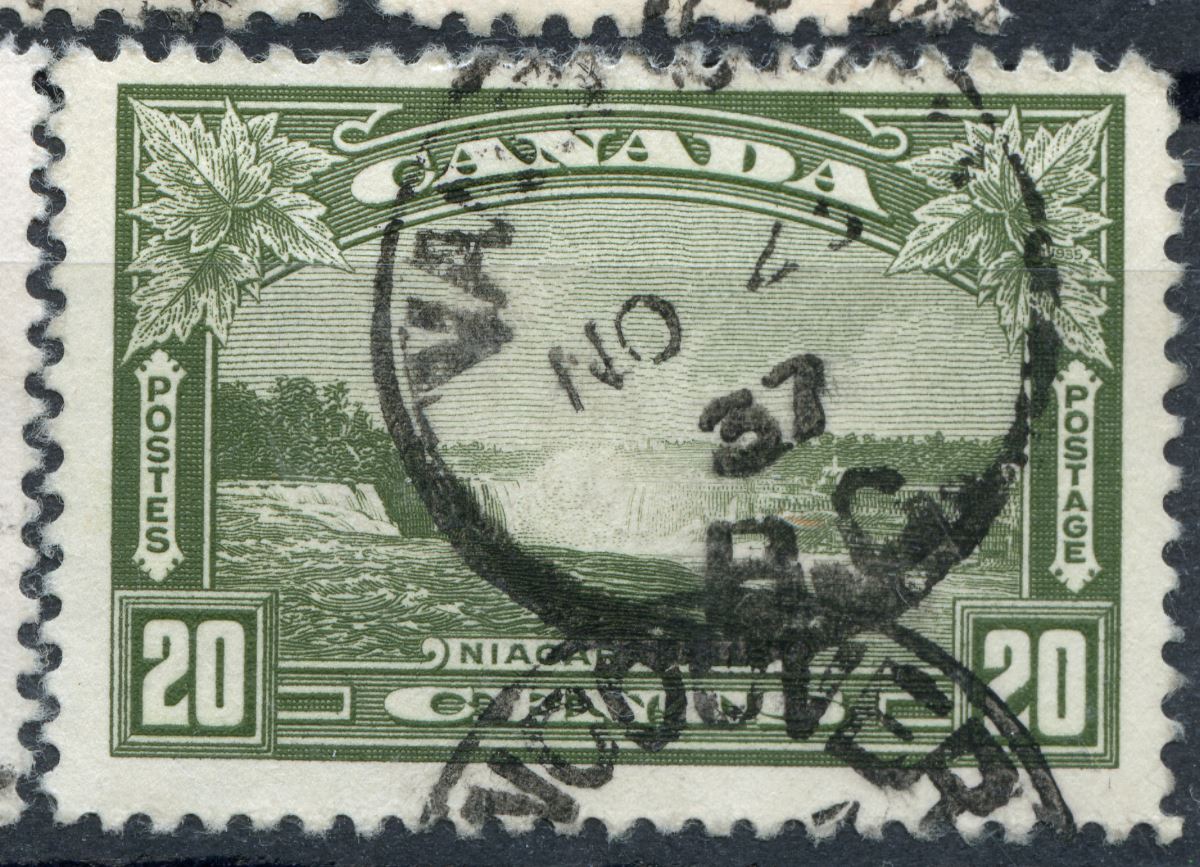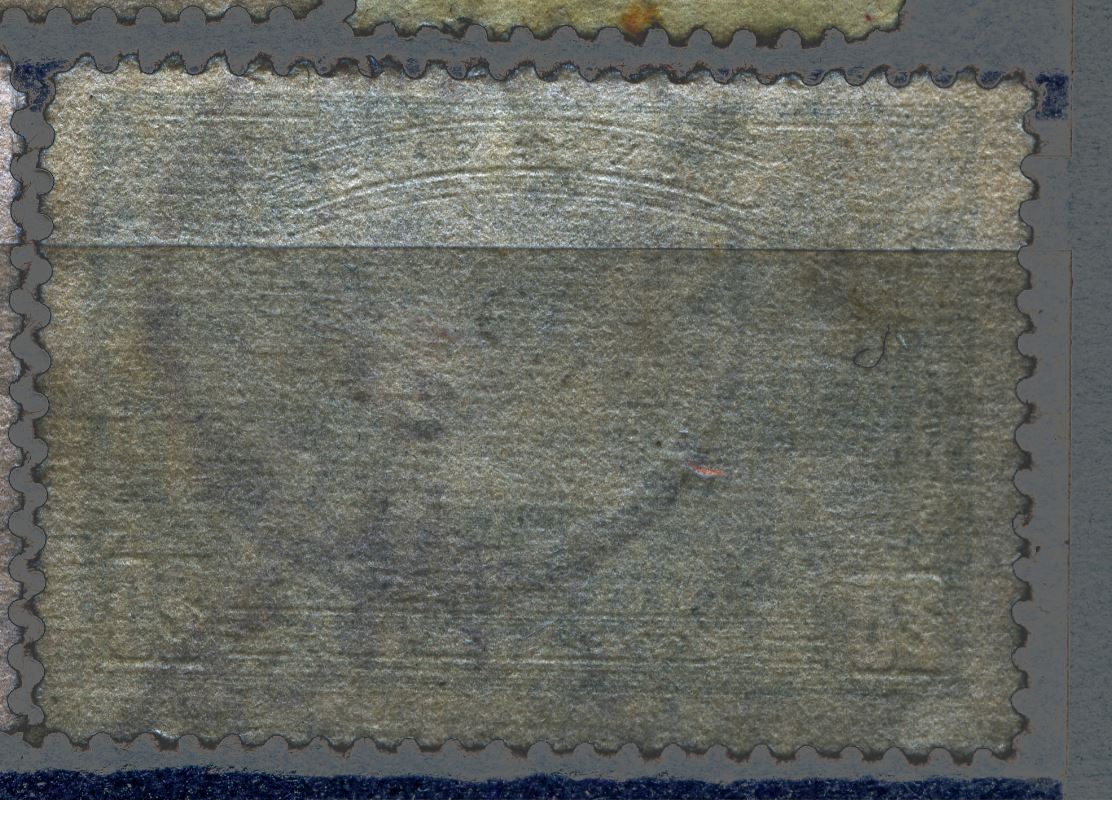
Recently a few interesting threads are dealing with a particular group of stamps and their production
The 1972-1978 Caricature and Landscape Issue of Canada
http://goscf.com/t/65546&whichpage=6#575144
and the 4$ Bighorn sheep
http://goscf.com/t/63219
Certain aspects are related be it the fact that most stamps were printed by the Canadian Banknote Company.


The year 1937 reflects the world-wide introduction of the twill-binding to papermachines long sieves!
So far, I had only found 1938 related changes from linen-binding to twill-binding, but as Canada may be ahead of everybody in the paper industry, the first now stamps with a twill binding are from Canada in 1937!
The introduction of the "Quick Sticks" self-adhesives in 1989 also coincides with the end of the British American Banknote Company in stamp production. The use of self-adhesives led to an explosion of new issues. The Quick Sticks having Scott numbers 1191-1193, the last given Scott numbers in my 2019 Unitrade exceeds the 3100! Or some 1900 main numbers in 30 years....
Unlike the BABN the CBN probably did not use reel-fed recess presses. And neither did they use th Giori-method of printing more colours from one plate/cylinder.
During the 1970/1980-ies some of their "recess printing" did not look like recess at all! In my newly bought Unitrade [2019] in some series like the 1977 Flowers, Street Scenes and National Parks the recess lettering rather looks like "hitting nails".
I will come to these particular aspects later on.
Lithograving,
referring to your posting:
"One difference I see is in the engraving of CANADA. Plate 1 has mottled lettering, raised bumps while on Plate 2 the letters appear smoother. For some reason this is more evident with a low power magnifying glass than on this scan below.
Plate 1 on top of plate 2

Plate 1

Plate 2 
The interesting part though is in the make up of the individual rosettes. On plate 1 most green rosettes in the area around the da have light centers whereas on Plate 2 they have dark dots for centers. Same goes for some of the green roofs and also for the blue in the hills, below postes/postage.
I only have these 2 PBs and a single of each so this isn't conclusive obviously but if other collectors check their stock then maybe we will get the answers."
The "hitting nails" looks a lot more weird!
CBN was printing mostly in single colour reess in the 1937-1967 period.
Occasionally 2-colour recess from separate plates [cylinder?]; since 1952 also recess combined with 1 or 2 colours in offset-litho. Since 1965 occasionally offset-litho only upto 3 colours.
The 1968 Inuit carvings and the 1969 Suzor-Cote stamps were in photogravure by the CBN! Did they employ subcontractors for these?
The BABN started with their Goebel press in 1968, but also printed stamps in offset-litho only [1968 Meteorology] or a combination of recess plus offset-litho occasionally.
Was there any change in the way CBN printed in recess since 1968???
|
The offset-litho flowers show some variation in the lettering - some are quite normal looking, others are rather "hitting nails" Compare the photogravure first!
And now the offset-litho:
And now the 5c offset-litho:
Only the third from the left seems to be OK as recess, the other 3 are rather "hit on the nail".... |
|
Quoting Adminware as to the National Parks: http://adminware.ca/checklist/chk_env_park.htm Quote: [quote] The British American Bank Note Company took over
the printing of these National Parks from the Canadian Bank Note
Company - three designs were affected. Fortunately for the stamp
collector, the two different printings can be differentiated: the
inscriptions are more pronounced on the BABN printings, compared with
the CBN printings.[/quote] Is this explanation for the difference between BABN and CBN enough???? And what about the two plates for CBN?? Just the papers? CBN:
BABN:
How to tell them apart?!?! BABN:
CBN:
Inscriptions more pronounced!!!! Crude "hit the nail" recess by CBN!
As judged by the colour, the first from the left is BABN?!
So, not only the colours,but also the thickness of the "-" in"A".... And of course the "hitting nails"! The $2 Kluane has 4 "plates" of which 1 and 2 are on Abitibi paper, 3 on Clark and 4 on Harrison paper. I don't think Yves Baril was responsible for the dies but for the first one!? The hitting nails "engravings" were systematically applied in the 1977-1986 period by the CBN, starting with the offset-litho flowers! The Street Scenes were in recess + photogravure [50c, 75c, 80c], but in recess+offset-litho [50c, 60c]. Same crappy recess as well ... |
|
Not recess but die-stamping?! Double impression as I look at it after a good night's sleep :) You can recognize the fragments of "CANADA"
6 different "engravings"!?
The numbers 1,2 and 6 may have the same source, but the others??? This is NOT recess! At the back: 1+2 and 6 are similar indeed!
The numbers 3, 4 and 5:
The paper of number 3 is quite different and looks like the paper on which my "double impression" was printed: And that is definitely a "multilayer binding:".... I.e certainly not Abitibi paper.
|